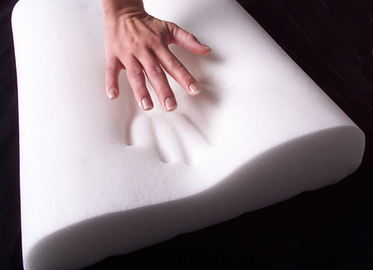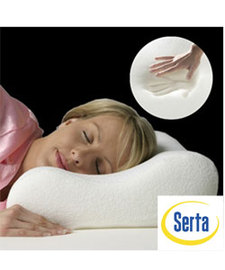Introduction

Memory pillows are made up of a special type of foam called the memory foam. This memory foam is made of a polymer which is in turn made up of several chains of organic units that are joined together using the carbamate or the urethane links. These are known as the polyurethane, which is a type of polymer that comprises of two types of functional monomers. These polymers, when added with other kinds of chemicals, increase the viscosity of the foam. The adding up of other types of chemicals also helps in increasing the density of the foam which makes the foam soft. Now, with the help of these additional chemicals, the foam becomes soft to the extent that when you lie on a memory pillow the shape of your head or your body is carved into it due to the heat that comes out of your body and with the pressure which is exerted when something is pressed against it. The foam takes its original shape once the pressure is removed. The quicker a pillow takes back its shape the better the foam is considered to be. These pillows occupy a large portion in the market of pillows.
History

The memory foam was basically designed by scientists, particularly for the people of NASA, in order to improve the safety, as the cushions which are used in aircrafts which prevent people from getting hurt in case of an accident or the jumps that might come in your journey. When this foam was first introduced, it was widely used by many medical institutes to help patients. These foams were also very expensive when they were introduced in the market. But now, they are not that expensive. They are now widely used as memory pillows and are also being purchased by a large number of people.
Features

The memory pillows are usually much denser than any other type of pillows. This density of the pillow makes it supportive, which in turn makes it a little heavier. These mattresses are more comfortable than any of the traditional ones, which is why they sell more than any other type of mattresses or pillows. You can measure the comfortability of these pillows by the indentation force deflection (IFD) rating. But this is not an accurate way of measuring its softness and comfortably, as even the low density pillows might feel soft when they are pressed, so this particular way is not a good one to measure the softness of such pillows. The structure of this pillow is a close cell structure and it moulds the pillow because of the heat that emits from your body as you rest on it, as mentioned earlier. This cell structure helps the shape recovery of the pillow. This structure is tight and so not much air can flow through it, so the recovery is not that quick but that has nothing to do with the softness of the mattress. The amount of the memory foam though depends on the softness of the pillow. For example, a six inch memory foam pillow will be much softer than a one inch memory pillow.
Tips and comments
The cons of a comfortable memory pillow are that they emit a certain smell, which is quite similar to the smell of white wash but this smell might disappear by constant airing. These soft pillows are said to cause many types of respiratory diseases.